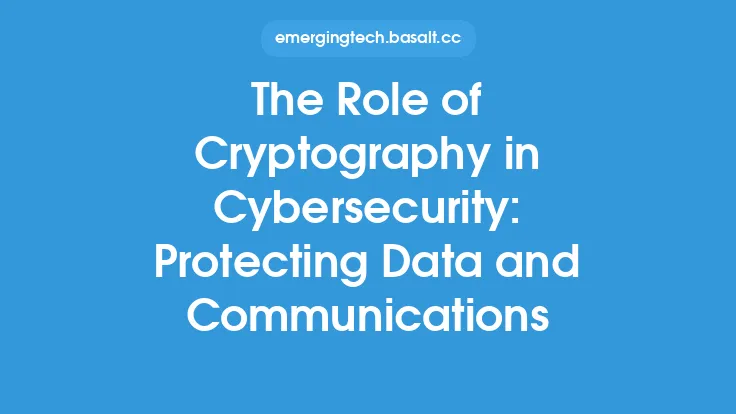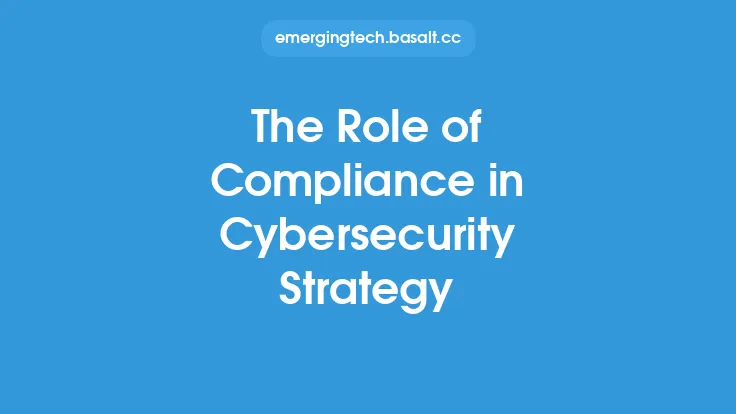Endpoint security plays a critical role in preventing data breaches, which can have devastating consequences for individuals and organizations. With the increasing number of devices connected to the internet, the attack surface has expanded, making it easier for attackers to exploit vulnerabilities and gain unauthorized access to sensitive information. In this article, we will delve into the world of endpoint security and explore its significance in preventing data breaches.
What is Endpoint Security?
Endpoint security refers to the practice of securing endpoint devices, such as laptops, desktops, mobile devices, and servers, from cyber threats. Endpoints are the entry points for attackers to gain access to an organization's network and data. Effective endpoint security measures can prevent attackers from exploiting vulnerabilities, stealing sensitive information, and disrupting business operations. Endpoint security involves a combination of technologies, processes, and procedures to protect endpoints from various types of threats, including malware, phishing, and unauthorized access.
The Threat Landscape
The threat landscape is constantly evolving, with new threats emerging every day. Some of the most common threats to endpoint security include:
- Malware: Malicious software designed to harm or exploit endpoint devices, including viruses, Trojans, spyware, and ransomware.
- Phishing: Social engineering attacks that trick users into revealing sensitive information, such as login credentials or financial information.
- Unauthorized access: Attackers gaining access to endpoint devices or networks without permission, often through weak passwords or unpatched vulnerabilities.
- Advanced Persistent Threats (APTs): Sophisticated, targeted attacks that use multiple vectors to breach endpoint security and steal sensitive information.
- Zero-day exploits: Attacks that take advantage of previously unknown vulnerabilities in software or hardware.
Endpoint Security Measures
To prevent data breaches, organizations must implement robust endpoint security measures. Some of the most effective measures include:
- Endpoint detection and response (EDR): Solutions that detect and respond to threats in real-time, using advanced analytics and machine learning algorithms.
- Anti-virus software: Signature-based and behavioral-based detection and prevention of malware.
- Firewall configuration: Configuring firewalls to block unauthorized access to endpoint devices and networks.
- Patch management: Regularly updating software and operating systems to fix vulnerabilities and prevent exploitation.
- Encryption: Encrypting sensitive data both in transit and at rest to prevent unauthorized access.
- Secure authentication: Implementing strong authentication measures, such as multi-factor authentication, to prevent unauthorized access.
- Network segmentation: Segmenting networks to limit the spread of malware and unauthorized access.
Technical Controls
Technical controls are an essential component of endpoint security. Some of the most effective technical controls include:
- Host-based intrusion detection systems (HIDS): Monitoring endpoint devices for signs of intrusion or malicious activity.
- Host-based intrusion prevention systems (HIPS): Preventing intrusions and malicious activity on endpoint devices.
- Data loss prevention (DLP): Monitoring and controlling the transfer of sensitive data to prevent unauthorized access or theft.
- Secure boot: Ensuring that endpoint devices boot up with authorized software and firmware.
- Trusted Platform Module (TPM): Using hardware-based security to store and manage encryption keys, certificates, and other sensitive data.
Operational Controls
Operational controls are also crucial for effective endpoint security. Some of the most effective operational controls include:
- Incident response planning: Developing and regularly testing incident response plans to respond quickly and effectively to security incidents.
- Security awareness training: Educating users about endpoint security best practices and the importance of security awareness.
- Continuous monitoring: Continuously monitoring endpoint devices and networks for signs of malicious activity or vulnerabilities.
- Vulnerability management: Identifying, prioritizing, and remediating vulnerabilities to prevent exploitation.
- Configuration management: Managing and controlling changes to endpoint devices and networks to prevent unauthorized access or malicious activity.
Benefits of Endpoint Security
Implementing robust endpoint security measures can have numerous benefits, including:
- Preventing data breaches: Protecting sensitive information from unauthorized access or theft.
- Reducing downtime: Minimizing the impact of security incidents on business operations.
- Improving compliance: Meeting regulatory requirements and industry standards for endpoint security.
- Enhancing reputation: Demonstrating a commitment to security and protecting customer and employee data.
- Increasing efficiency: Automating endpoint security tasks and streamlining security operations.
Conclusion
In conclusion, endpoint security plays a critical role in preventing data breaches. By implementing robust endpoint security measures, including technical and operational controls, organizations can protect their sensitive information and prevent devastating consequences. As the threat landscape continues to evolve, it is essential for organizations to stay vigilant and adapt their endpoint security strategies to stay ahead of emerging threats. By prioritizing endpoint security, organizations can ensure the confidentiality, integrity, and availability of their data and maintain the trust of their customers and employees.





